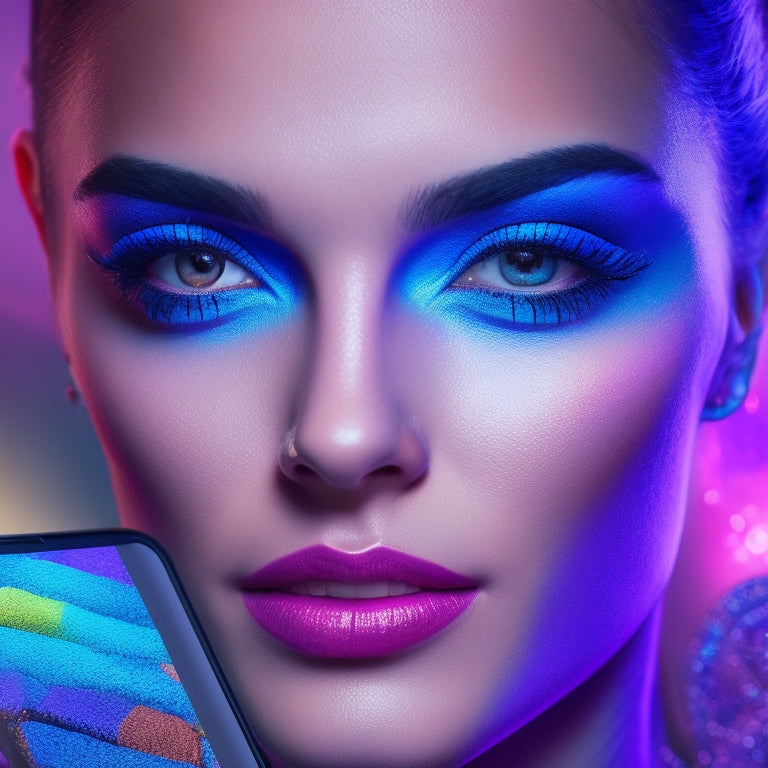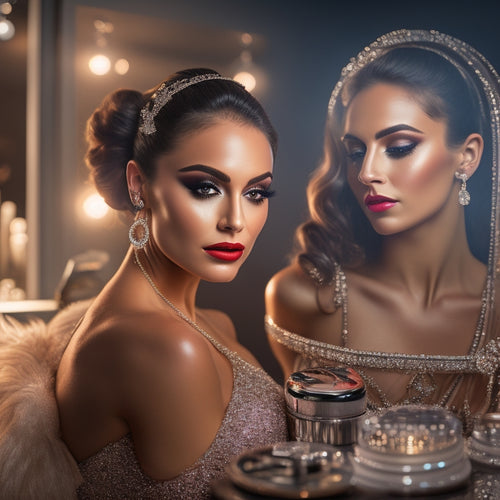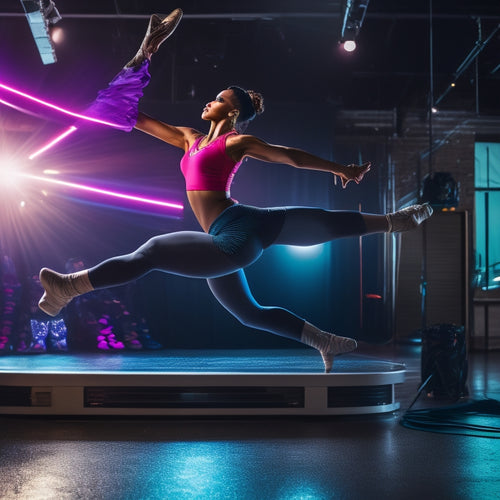
3 Essential Digital Makeup Skills for Dance Artists
Share
To enhance your dance performances, you'll need to master three essential digital makeup skills. First, learn to expertly wield virtual try-on techniques to create realistic, 360-degree makeup designs. Next, develop skills in crafting realistic digital makeup designs that focus on skin tone accuracy and dimension. Finally, incorporate prosthetics to create three-dimensional characters that elevate your performances. By combining these skills, you'll discover new possibilities for immersive storytelling. As you explore these digital makeup skills, you'll find new ways to bring your performances to life.
Key Takeaways
• Master virtual try-on techniques to effortlessly switch between various makeup styles and save time and effort in the process.
• Learn to create realistic digital makeup designs by layering textures and adjusting opacity for a more authentic look.
• Experiment with prosthetics to create three-dimensional characters and elevate performances with realistic prosthetic materials.
• Develop immersive storytelling skills by combining digital makeup with prosthetics to transport audiences to new worlds.
• Practice and patience are key to mastering digital makeup skills, enhancing character development and elevating performances.
Mastering Virtual Try-On Techniques
As a dance artist, you'll want to master virtual try-on techniques to effortlessly switch between different makeup looks, just as you'd change dance shoes to match the mood and style of your performance.
With virtual try-on, you can experiment with various beauty filters and makeup styles without physically applying them. This technology allows you to try on different looks in real-time, saving you time and effort.
You can even use virtual reality (VR) to immerse yourself in the experience, getting a 360-degree view of how the makeup looks on you.
Creating Realistic Digital Makeup Designs
With a keen eye for detail, you'll craft realistic digital makeup designs by layering textures, adjusting opacity, and fine-tuning color palettes to achieve a flawless, high-definition finish.
When creating digital makeup designs, it's crucial to take into account the subtleties of skin tones and how they interact with lighting effects.
To take your designs to the next level, focus on the following key elements:
-
Skin Tone Accuracy: Make sure that your digital makeup designs accurately capture the nuances of various skin tones, from porcelain doll complexions to rich, dark hues.
-
Lighting Effects: Experiment with lighting effects to create depth and dimension in your designs. This could include subtle highlights, dramatic shadows, or anything in between.
-
Texture and Dimension: Add texture and dimension to your designs by incorporating subtle imperfections, such as freckles, pores, or fine lines, to create a more realistic finish.
Enhancing Performances With Prosthetics
You'll take your digital makeup skills to the next level by incorporating prosthetics into your designs, allowing you to create complex, three-dimensional characters that transport audiences to new worlds.
Prosthetics can elevate your performances, adding a new layer of realism and depth to your characters. To get started, you'll need to choose the right prosthetic materials for your design. Silicone, foam latex, and gelatin are popular options, each with its own strengths and challenges. Consider the character's personality, environment, and movement when selecting materials and designing your prosthetic.
When it comes to character development, prosthetics can be a game-changer. By carefully crafting prosthetic pieces that align with your character's backstory and motivations, you can create a more nuanced and believable performance.
For example, a dancer playing a mythical creature might wear prosthetic horns and scales to convey a sense of power and mystery. By combining prosthetics with digital makeup, you can create a truly immersive experience that draws the audience in.
With practice and patience, you can master the art of prosthetic design and take your performances to new heights.
Frequently Asked Questions
Can I Use Digital Makeup Skills for Film and Theater Productions Too?
You can totally apply your digital makeup skills to film and theater productions, seamlessly integrating them into Production Design and Set Decoration to create an immersive experience for the audience.
Do I Need to Know How to Code for Digital Makeup Design?
Don't worry, you won't need to be a coding virtuoso to create stunning digital makeup designs. Focus on mastering Design Fundamentals and learning Software Shortcuts to streamline your workflow, and you'll be well on your way to creating mesmerizing looks.
How Do I Price My Digital Makeup Services for Clients?
When pricing your digital makeup services, you'll want to take into account client expectations, your expertise, and the project's scope. Develop a pricing strategy that reflects your value, such as hourly, package, or à la carte rates, to guarantee fair compensation.
Can I Use Digital Makeup to Create Special Effects for Music Videos?
Coincidence has it that music videos are where digital makeup magic happens! You can create mind-blowing special effects using virtual prosthetics, fantasy realism, and 3D modeling, allowing you to push creative boundaries and mesmerize audiences.
Are Digital Makeup Skills Transferable to Other Creative Industries?
As you explore digital makeup skills, you'll find industry crossover opportunities abound, granting you artistic freedom to shift effortlessly into film, theater, or even video game design, where your creative vision knows no bounds.
Related Posts
-

Group Dance Makeup Tutorials for Online Success
As you immerse yourself in the world of group dance makeup tutorials, you'll need to master essential makeup techniqu...
-

Must-Have Packing Cubes for Stress-Free Travel
Packing cubes are must-haves for your stress-free travel. They turn chaotic suitcases into neatly organized compartme...
-

Take Your Dance Skills to the Next Level With These Accessories
You're ready to take your dance skills to the next level! With the right accessories, you can access new styles, impr...


